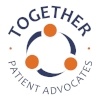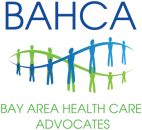
A slice of good news found within the COVID-19 statistics is that the majority of people with the virus are not sick enough to warrant hospitalization. Johns Hopkins estimates about 80 – 90% of COVID-19 cases are “not severe and many may be asymptomatic.” Even though people experience varying levels of symptoms and recovery times, there are things that patients or their caregivers can do at home to manage mild to moderate COVID-19 symptoms and help the recovery process.
Symptoms
Mild to moderate symptoms of COVID-19 may include the following:
- Sore throat
- Nasal congestion
- Cough
- Muscle and body aches
- Fever, Chills
- Shortness of breath or difficulty breathing
- Headache
- A new loss of smell or taste (often an early symptom and can be seen while otherwise asymptomatic)
- Diarrhea and vomiting
- Extreme fatigue
These symptoms can last for several weeks, with a longer time to regain full strength and stamina.
Treatment
Here are things you can do to help your COVID-19 treatment:
- Early evaluation, diagnosis and treatment by your physician. This may be in person or via telehealth. Depending on your symptoms and underlying risk factors, your physician may recommend certain protocols to include home monitoring of your oxygen levels by pulse oximetry and/or certain medications to help prevent some of the complications from the inflammatory cascade that happens in some patients around days 7-10 of illness.
- Drink plenty of fluids
- Take over-the-counter pain relievers to help reduce the fever and relieve muscle aches
- Rest as much as you need to
- Enlist a support team to do the things that still need to get done like walk the dog, take out the trash, purchase and deliver groceries. Make sure your team takes all necessary safety precautions like maintaining social distance, wearing a mask, and frequent hand washing.
- Your doctor may schedule regular telehealth appointments during your illness.
- Call your doctor if your symptoms get worse.
- This helpful guide from the UK reviews methods to help with breathlessness at home.
It’s time to seek immediate emergency care if you experience any of these symptoms:- Prolonged or worsening shortness of breath
- Persistent chest pain or pressure
- New confusion, difficulty waking or staying awake, or loss of consciousness
- Bluish lips or face
It may be tempting to avoid the ER at all costs, but if you're showing signs of significantly worsening illness, evaluation and treatment in the ER can prevent serious complications.
Recovery
Dr. Lauren Ferrante, a Yale School of Medicine pulmonary and critical care physician, offers these suggestions to help your recovery:
- Be prepared to persevere because recovery is individualized and can last for several weeks
- Know that fluctuating progress is normal
- Keep moving to help overcome any muscle weakness you may have as a result of limited physical activity:
- Get out of bed
- Sit in a chair
- Walk around a room
- If you can’t do the things listed above, simply raise your arms and legs while lying down
The World Health Organization (WHO) and Johns Hopkins both agree that isolation should continue for 10 days after onset of symptoms AND 3 days without fever or respiratory symptoms (cough, shortness of breath). No fever reducing medications should be used in order for a fever-free day to "count" as fever-free.
If you had symptoms but your COVID-19 testing returns negative (no disease), you may still need to quarantine for the full duration given the risk of false negative test results (meaning, you have the disease but the test misses it). Check with your doctor regarding your specific situation and testing.
Once you are out of isolation, it is still important to wash your hands frequently, maintain social distancing, and wear a mask covering your nose and mouth when you are in a public place with other people. It is still unclear if immunity occurs and if so, how long it lasts. Do all you can to keep yourself and others safe.



.gif?width=200&name=NAHAC-Member-Badge200x112+(1).gif)


